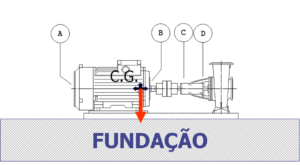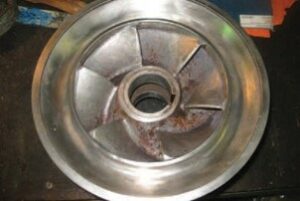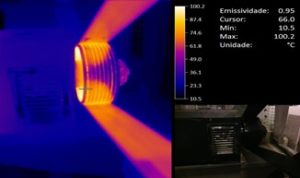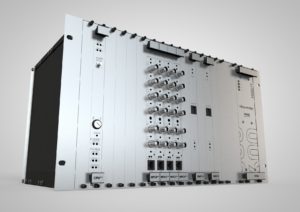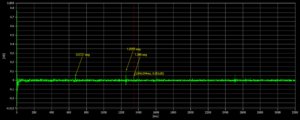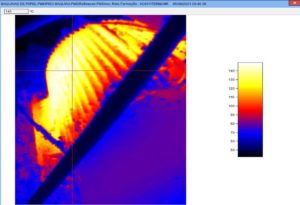Relative and absolute vibrations in turbomachinery
This article explains why the measurements of relative and absolute vibrations in turbomachinery.
This article belongs to a series, which constitutes the support material for the course on vibration analysis in turbomachinery. Links to the other articles can be found on here.
The measurement of relative vibrations in turbomachinery
In 1970, O American Petroleum Institute defined the measurement of the relative displacement between the shaft and the bearing, com proximity probe, as the measuring sensor to measure the acceptable vibration displacement of the shaft, during factory acceptance tests. This was added as a requirement in their standard for centrifugal compressors..
A shaft vibration measurement, using proximity probes, has become the industry standard for turbomachinery acceptance testing and machine protection. The eddy current proximity probe has become the preferred method for assessing vibration and general mechanical condition in large turbomachinery employing antifriction metal film bearings.. Such machines and types of bearings are responsible for the vast majority of compressors., turbines, bombs, electric motors, generators and other rotating equipment greater than 1.000 HP, and can be found in abundance..
The advantages of using it are as follows:
- no contact;
- Measures the relative vibration of the shaft relative to the bearing;
- Installed in pairs measure shaft centerline position (DC clearance);
- Installed in pairs measure the orbit;
- Flat DC frequency response – 10KHz;
- simple calibration;
- Suitable for harsh environments.
The limitations of these measuresthe
The limitations of this measure are:
- These sensors, measuring the relative vibration of the shaft relative to the bearing, never measure more than peak-to-peak amplitude, equal to the diametral clearance of the bearing.
- On the other hand, this parameter does not give an idea of the force generated in the shaft, acting on the bearing.
Variation of bearing behavior when vibrations increase
When the amplitude of shaft displacement vibration increases, the thickness of the lubricant film between the shaft and the anti-friction metal bearing.
The eccentricity of the shaft, which is the ratio of the distance between the center of rotation and the geometric center of the shaft, divided by the diametral clearance, increase.
The variation of oil film stiffness
Stiffness is the force required to compress a spring through a unit of distance. (force/distance), in newton/meter.
The rigidity of the rotor supports, the bearings, it's very important, such as the stiffness of the rotor itself. Together with the base, constitute a structural circuit that has to be considered as a system. However, in this case, you will see the properties of the bearing lubricant film.
Below you can see a qualitative graph of parameters of an anti-friction metal bearing, versus shaft journal eccentricity ratio.
- the rigidity, K, and the damping, D, are minimum when the journal is in the center of the bearing (zero eccentricity),
- They are approximately constant for low eccentricity ratios.
- As the journal approaches the bearing surface (the eccentricity approaches one), stiffness K and damping D, drastically increase.
- λ behaves in the opposite way. λ is the so-called Circumferential Average Fluid Velocity Ratio. It is a dimensionless measure of fluid flow around the rotor..
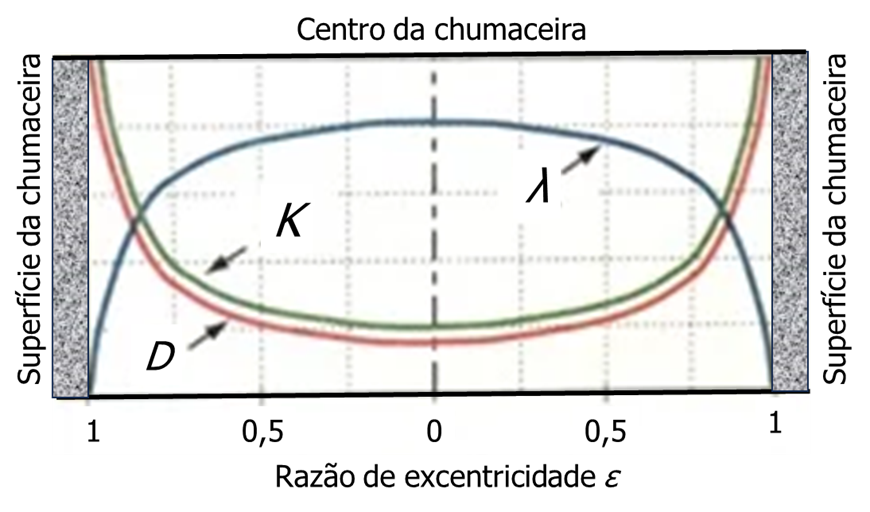
Relative and absolute vibrations in turbomachinery – Figure 1 – Rigidity and damping as a function of eccentricity, in an anti-friction metal bearing of a turbomachine.
When looking at the eccentricity ratio of anti-friction metal bearings, in the previous figure, it can be seen that both the stiffness and damping of the film increase exponentially as the rotor approaches the bearing surface (eccentricity=1). Oil viscosity also changes non-linearly with increasing shear oil temperature..
That is, when the amplitudes of the relative vibrations increase, the stiffness of the oil film increases and the forces generated on the shaft, start to lose their dampening, and to be better transmitted to the bearings.
Measurement of absolute vibrations in anti-friction metal bearings
the next step, to evaluate the forces generated in the shaft and transmitted to the bearings, the measurement of absolute vibes, is more suitable than the measurement of relative vibrations.
References
Damping and stiffness, first, Drew Devitt, Turbomachinery International, 12, 2017

